
Autism Complications
Understanding the Full Spectrum of Autism-Related Health Challenges
Introduction to Autism and Its Complexities
Autism spectrum disorder (ASD) begins in early childhood and can significantly impact an individual’s ability to function in society. It manifests through difficulties in social communication, restricted behaviors, and sensory sensitivities, with signs often detectable by ages 2 to 3. While some children with autism have lower intellectual abilities, others possess average or above-average intelligence but face specific social and communicative hurdles. This article explores the myriad complications associated with autism, including medical, neurological, and mental health issues, and discusses management strategies to support affected individuals throughout their lives.
Early Signs and Symptoms of Autism
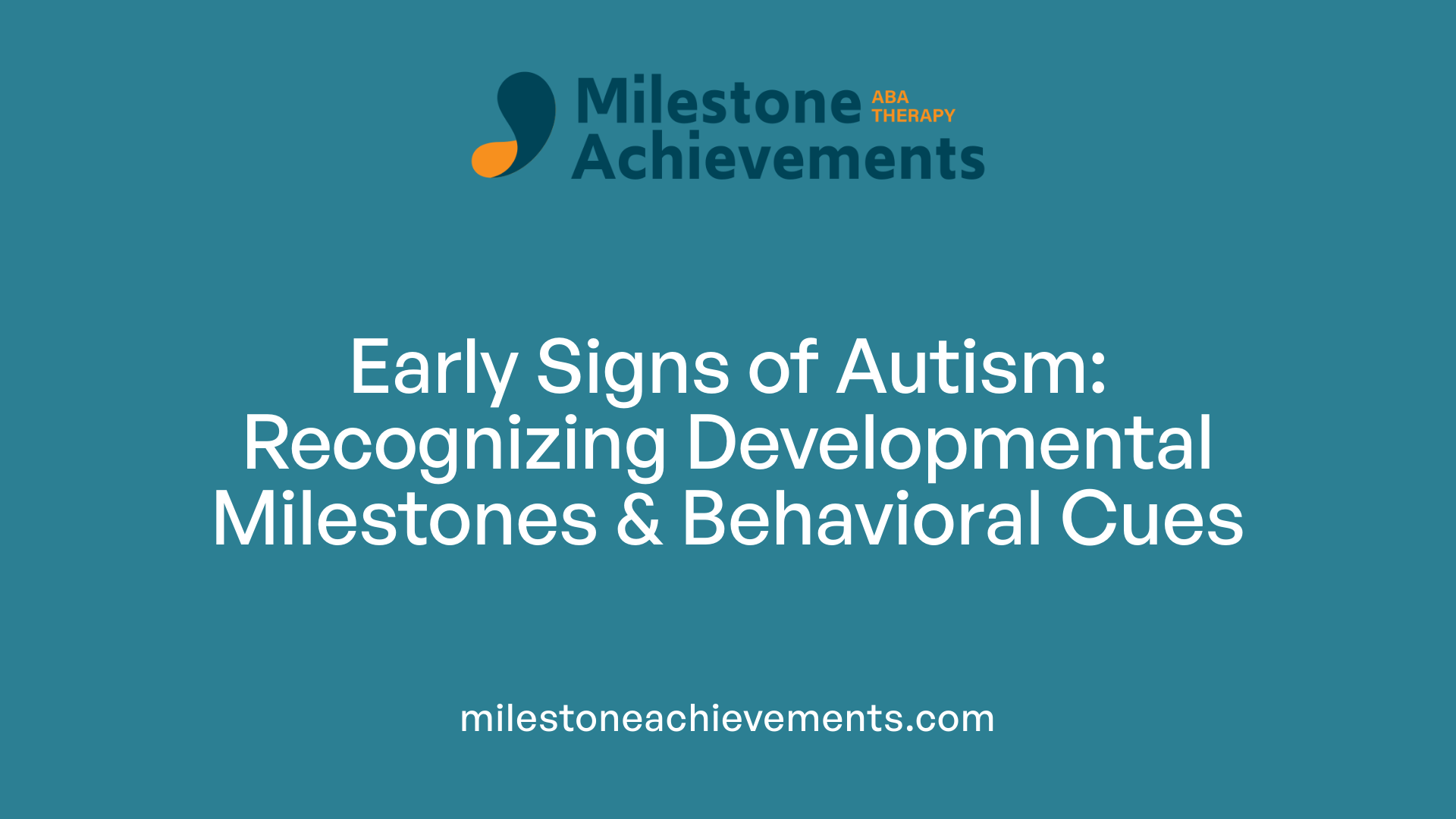
Developmental milestones and signs in infancy
Autism spectrum disorder often begins to show signs early in a child's development, usually noticeable by ages 2 to 3. In infancy, children with autism may not reach typical developmental milestones at the expected ages. They might exhibit limited eye contact and facial expressions, and may not respond to their name or social cues as other children do. Some may show little to no interest in sharing joy or social engagement, which can be early indicators of social difficulties.
Social interaction challenges such as poor eye contact and delayed speech
One of the hallmark signs of autism is difficulty with social interactions. Children might avoid eye contact, have delayed speech or no speech at all, and struggle to interpret facial expressions or tone of voice. These challenges can make it hard for them to build relationships, understand social norms, or respond appropriately in social settings. For example, a child with autism may seem indifferent to social interactions or prefer playing alone.
Repetitive behaviors and sensory sensitivities
Repetitive behaviors are common in autism and can include motions like hand-flapping, rocking, or spinning objects. Children may also develop routines or insist on sameness, becoming distressed if routines are disrupted. Sensory sensitivities are prevalent too—some children may be unusually sensitive to sounds, lights, or touch, leading to emotional discomfort or atypical reactions to sensory stimuli. Others may not seem to respond to pain or extreme sensations, which can sometimes mask underlying sensory issues.
| Symptom Category | Examples | Common Onset |
|---|---|---|
| Social interaction | Poor eye contact, delayed speech, difficulty interpreting facial cues | Usually around age 2-3, can appear earlier |
| Repetitive behaviors | Hand-flapping, rocking, insistence on routines | Typically early childhood |
| Sensory sensitivities | Overreaction to sounds, lights, or touch | From infancy, varies individually |
Recognizing these early signs can facilitate prompt evaluation and intervention. While symptoms vary, early detection significantly improves the potential for developmental progress and better support for children with autism.
Causes of Autism: Genetic and Environmental Factors
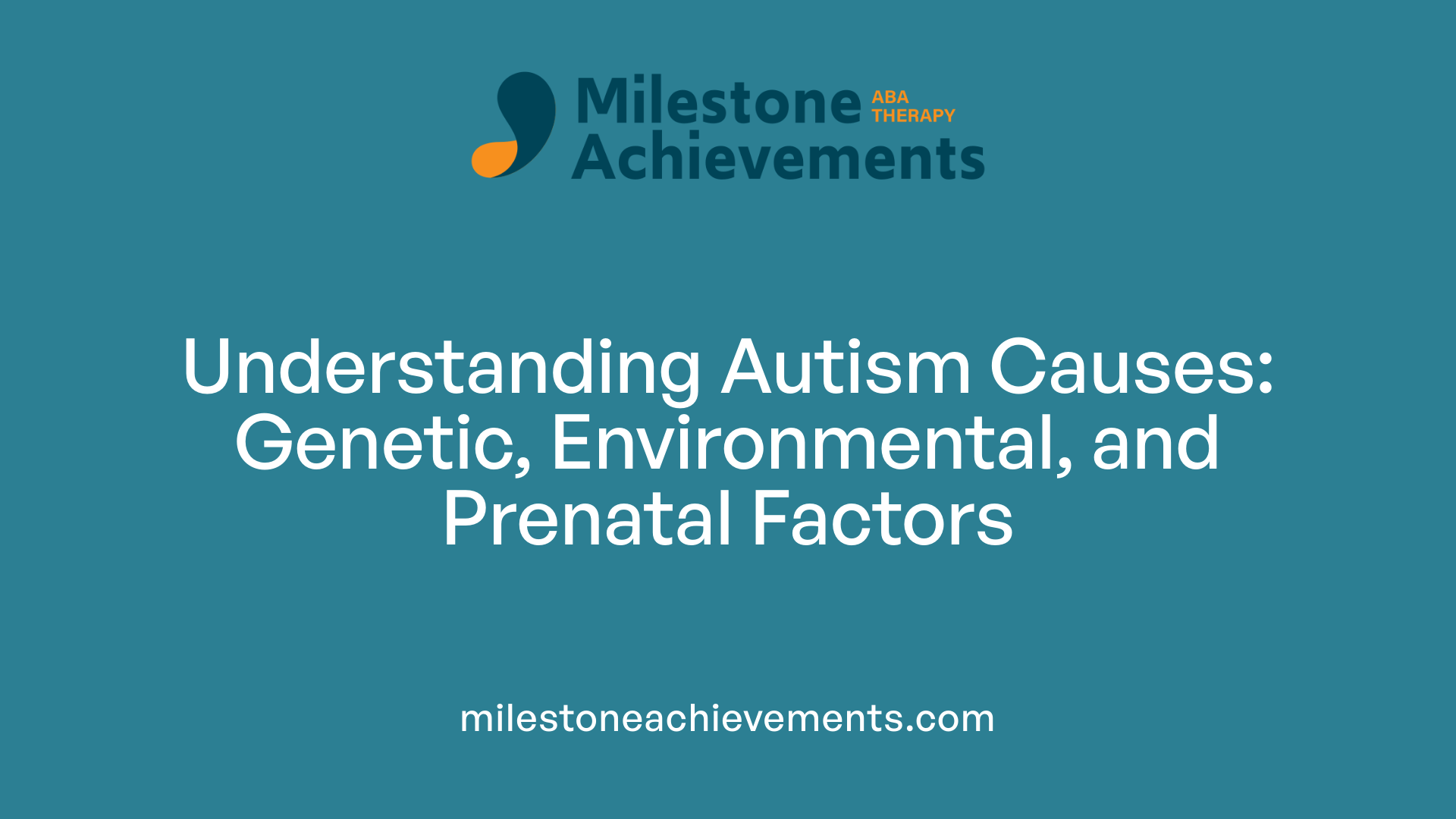
What causes autism during pregnancy?
The origins of autism during pregnancy involve a complex mix of genetic and environmental influences. Research indicates that certain environmental hazards encountered during pregnancy, such as air pollution, pesticides, microplastics, and heavy metals, can be linked to an increased risk of autism spectrum disorder (ASD) in children. These exposures may affect fetal brain development by disrupting neural networks or altering brain region communication.
In addition to environmental factors, maternal health conditions play a significant role. Gestational diabetes, obesity, and infections during pregnancy have been associated with higher ASD risk. The use of specific medications during pregnancy, such as valproic acid (a medication for epilepsy and bipolar disorder) and selective serotonin reuptake inhibitors (SSRIs), may also impact fetal neurodevelopment.
Hormonal imbalances and nutritional deficiencies are further contributors. For example, vitamin D deficiency in the mother has been linked to developmental challenges in the fetus. Overall, the causes of autism during pregnancy are multifactorial, involving an intricate interplay between environmental exposures and maternal health factors that influence the developing fetal brain.
Understanding these causes helps emphasize the importance of prenatal care, including managing maternal health, minimizing exposure to harmful environmental agents, and supporting optimal nutrition to potentially reduce the risk of autism.
Medical and Neurological Complications in Autism
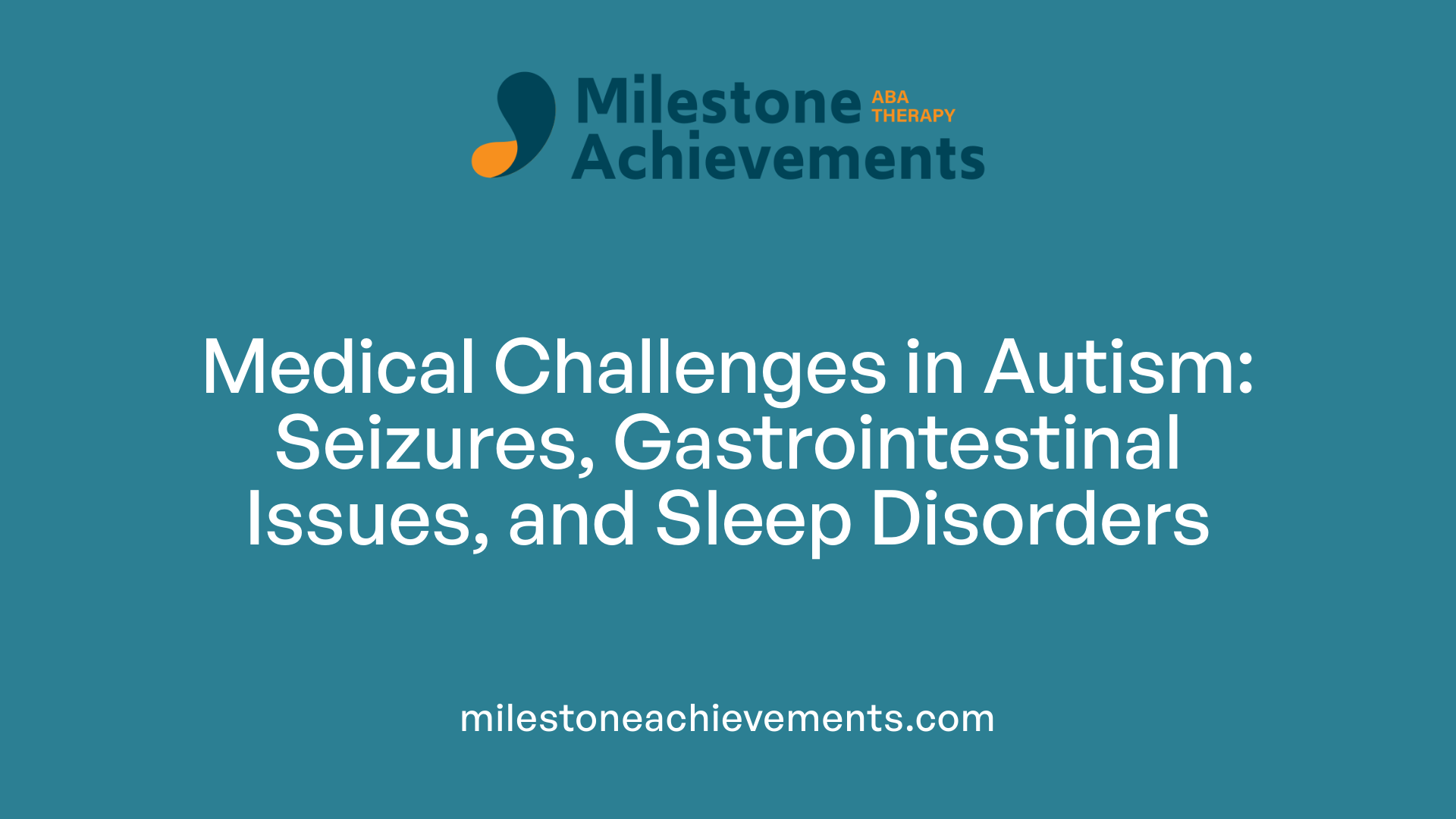
What medical conditions can complicate autism?
Autism spectrum disorder (ASD) often coexists with a variety of medical and neurological conditions that can impact management and overall quality of life. Many autistic individuals experience gastrointestinal issues like chronic constipation, stomach pain, and reflux, which can cause discomfort and influence behavior.
Seizures and epilepsy are quite common among people with ASD. Studies estimate that approximately one-third of autistic individuals may develop epilepsy, often beginning in childhood or adolescence. The onset can be influenced by factors such as early language regression, intellectual disability, or medication use.
Sleep disturbances are widespread in autistic populations, with up to 80% experiencing issues like insomnia, frequent waking, or early morning awakening. These sleep problems often stem from heightened anxiety, sensory sensitivities, or mood disorders, and they significantly affect behavior and daily functioning.
Feeding and eating disorders also affect about 70% of those with autism. These include food selectivity, food aversions like pica (the urge to eat non-food items), and overeating. Sensory sensitivities to taste, texture, or smell often drive these eating behaviors, which can interfere with nutrition and health.
Beyond physical health issues, many autistic individuals also face co-occurring mental health conditions such as anxiety, depression, obsessive-compulsive disorder (OCD), bipolar disorder, and schizophrenia. The presence of these conditions complicates diagnosis and treatment, often requiring a multidisciplinary approach.
In summary, autism can be complicated by an array of medical conditions, including gastrointestinal problems, seizures, sleep disorders, and eating issues. Managing these co-occurring conditions is essential to improving outcomes and supporting the well-being of individuals on the autism spectrum.
Mental Health and Psychiatric Co-occurrences
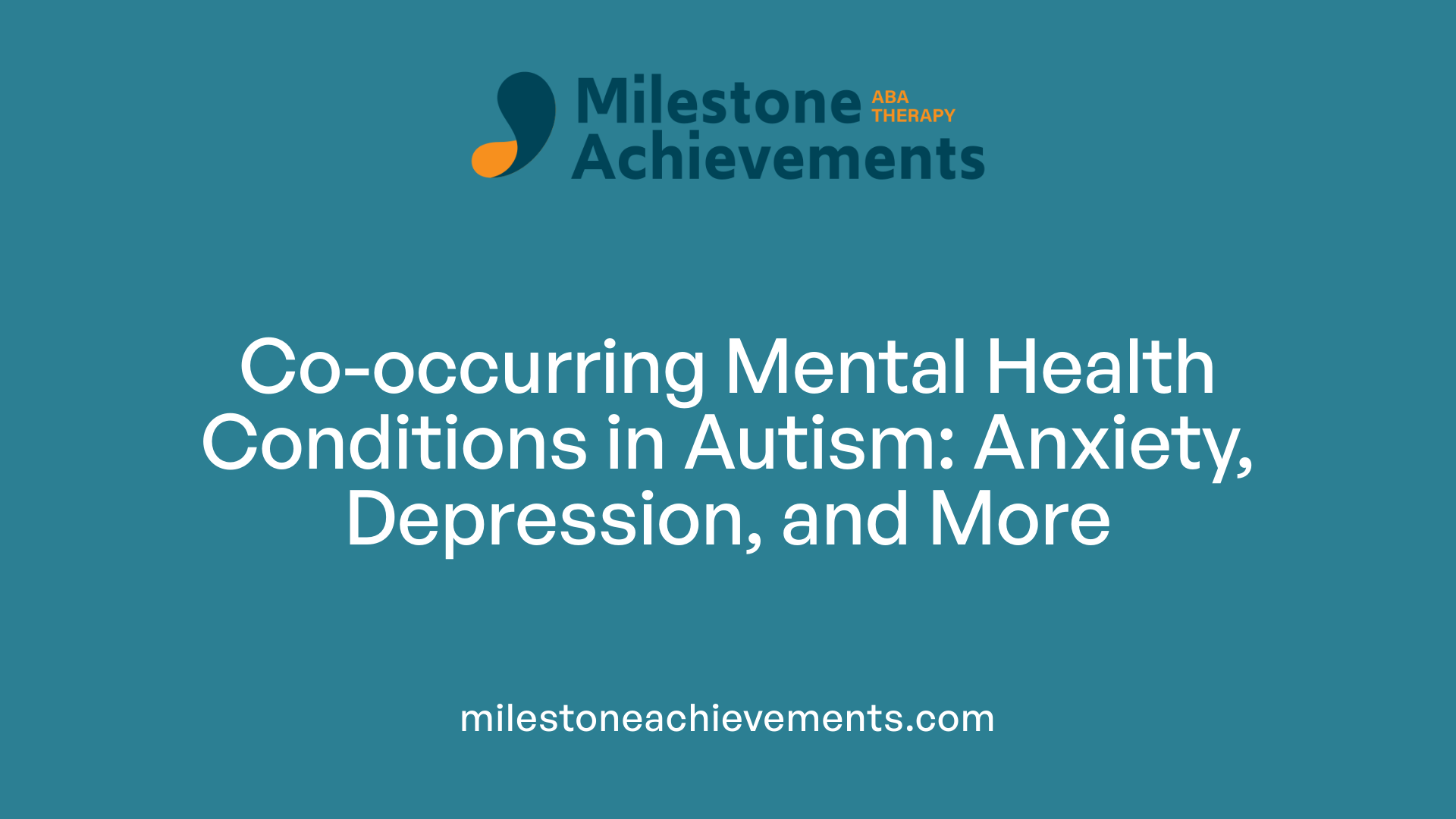
What are the common co-occurring conditions in autism?
Autism spectrum disorder (ASD) often happens alongside various mental and physical health conditions that can influence an individual's daily life. Recognizing these co-occurrences is essential for providing proper care and support.
Many autistic people experience mental health issues such as anxiety, depression, and obsessive-compulsive disorder (OCD). Research indicates that over 70% of autistic individuals have at least one additional mental health diagnosis. These conditions can cause additional challenges, including severe emotional distress, difficulty in social situations, and interference with everyday functioning.
In addition to mental health disorders, autistic individuals frequently face neurological and physical health conditions. Commonly seen among them are epilepsy, gastrointestinal problems such as stomach pain and digestive disturbances, and sleep issues like insomnia and disrupted sleep patterns. Some may also suffer from sensory sensitivities, including hypersensitivity to light, sound, or touch.
Other medical conditions often seen include attention deficit hyperactivity disorder (ADHD), which affects focus and impulsivity, learning disabilities like dyslexia and dyspraxia, and physical issues involving joints or skin, such as hypermobility syndromes and Ehlers-Danlos syndrome. These overlapping conditions can compound challenges in learning, social interaction, and daily routines.
Understanding the broad spectrum of co-occurring conditions helps in developing personalized intervention strategies. It ensures that support addresses not just core autism traits but also related health issues, improving overall quality of life for autistic individuals.
| Co-occurring Condition | Prevalence Rates | Notes |
|---|---|---|
| Anxiety | 17.1%-26% | Higher in adults, impacts daily functioning |
| Depression | 7.5%-20.2% | Common in both children and adults |
| OCD | Higher among teens and adults | Often linked to compulsive behaviors |
| Epilepsy | 5%-12.1% | Seizures typically start in childhood or adolescence |
| Gastrointestinal issues | 21%-70% | Includes stomach pain, constipation, or diarrhea |
| Sleep disorders | Up to 80% | Insomnia, night waking common |
| ADHD | 30%-35.3% | Affects focus and impulse control |
| Sensory issues | Common | Hypersensitivities to lights, sounds, textures |
Awareness of these overlapping conditions helps caregivers, educators, and health providers to implement comprehensive treatment plans. Early diagnosis and integrated support can significantly enhance life quality and emotional well-being for autistic individuals.
More information about these closely linked psychiatric and mental health disorders can be found through dedicated research and clinical resources, often summarized under searches like "co-occurring psychiatric and mental health disorders in autism."
Sensory Processing and Behavioral Challenges
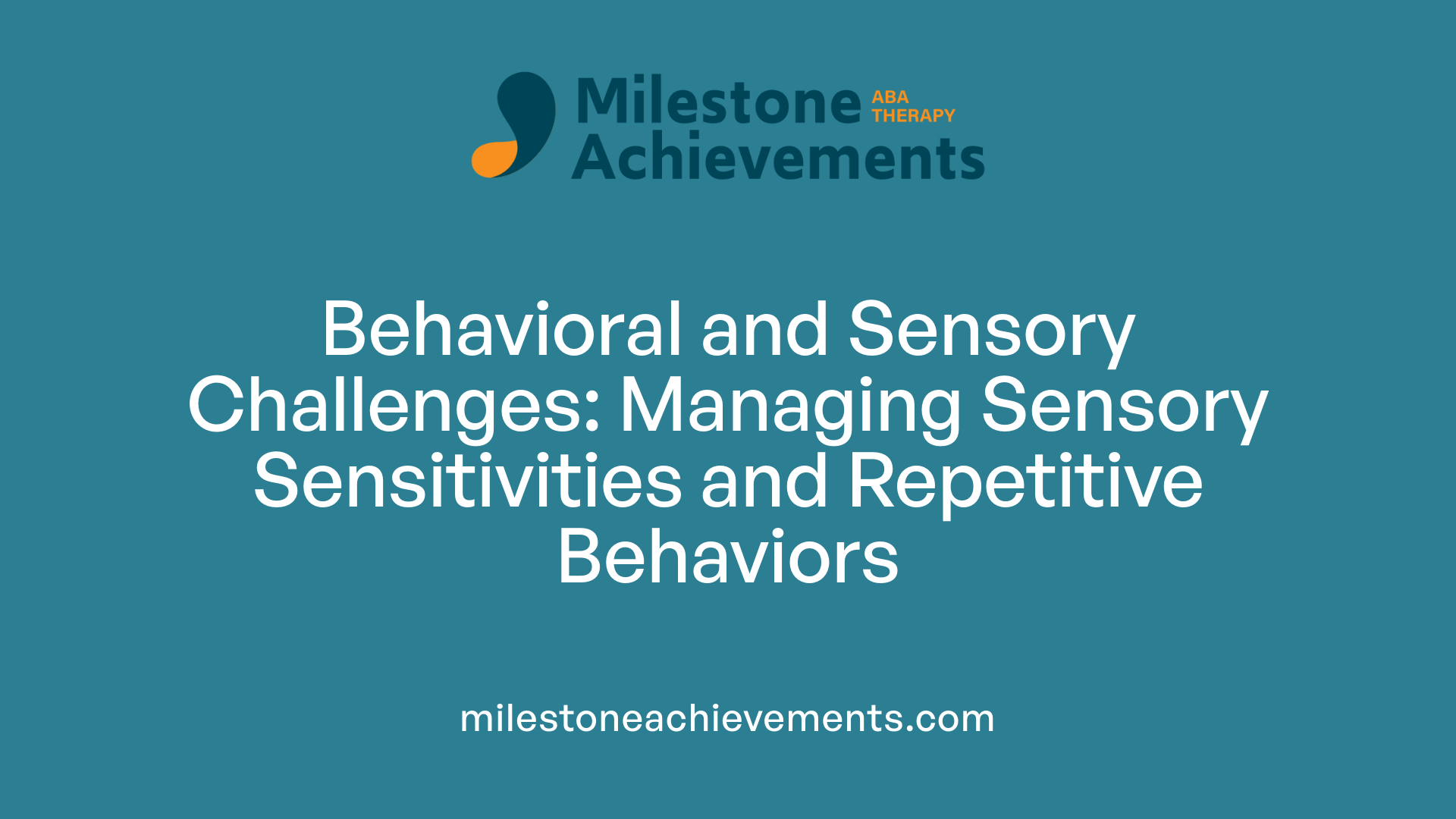
What are the behavioral and developmental impacts of autism?
Autism spectrum disorder (ASD) is a lifelong condition that influences how individuals think, communicate, and relate socially. One of the hallmark features of autism is the presence of sensory sensitivities, which can significantly affect everyday life. Many autistic individuals are hypersensitive to sounds, lights, textures, or pain, leading to discomfort or emotional distress in environments that others may find tolerable.
This increased sensory input sensitivity often triggers behaviors that serve as coping mechanisms. For example, repetitive motions such as rocking, hand-flapping, or repetitive sounds may help calm the individual or manage overwhelming sensations. These behaviors can also include creating routines or fixations on specific objects or interests, providing predictability and comfort amid sensory chaos.
Behavioral problems may also extend to aggression, self-injury, or wandering, especially when sensory inputs become intolerable or when routines are disrupted. These behaviors can pose safety risks and complicate social interactions, requiring tailored interventions. Moreover, many autistic individuals develop difficulties with social communication, which can further exacerbate feelings of isolation and challenge integration into various social settings.
Developmentally, autism can lead to delays or regressions in language and social skills, affecting educational and employment opportunities. However, with early detection and appropriate support, many individuals with autism can improve their social and functional skills, leading productive and fulfilling lives.
Understanding these sensory and behavioral aspects is crucial for developing effective support strategies that meet the unique needs of each person with autism.
Impact of Autism on Daily Life and Social Participation
What challenges do individuals with autism face in daily life?
People with autism experience a variety of difficulties that can affect their everyday functioning and social inclusion. Communication struggles are common, with many autistic individuals having trouble understanding social cues such as facial expressions, tone of voice, and body language. This can make social interactions feel overwhelming or confusing, leading to social isolation.
Sensory differences are also prevalent. Autistic people might find bright lights, loud noises, or certain textures intolerable, which can turn everyday environments like supermarkets, schools, or workplaces into stressful places. These sensory sensitivities often cause emotional distress or physical discomfort.
In addition to social and sensory challenges, many autistic individuals contend with co-occurring health issues. Conditions such as gastrointestinal problems, sleep disorders, anxiety, depression, and epilepsy are frequent, further complicating daily routines. These health challenges can limit participation in activities and impact overall quality of life.
Barriers to employment and education are significant. Outdated views and misconceptions about autism, along with difficulties in communication or emotional regulation, may lead to limited opportunities. Many face unnecessary discrimination, hindering their chances of successful education and meaningful employment.
Executive functioning issues — impacting organization, planning, and impulse control — also pose daily hurdles. Managing routines, handling unexpected changes, or maintaining emotional stability can be particularly difficult for some.
Support systems, including family, specialized therapies, and inclusive environments, play a vital role. They help autistic individuals develop skills, adapt to social norms, and participate more fully in community life.
This multifaceted set of challenges emphasizes the importance of understanding, acceptance, and tailored support to enable people with autism to lead fulfilling lives.
Challenge in social relationships and building relationships
Many autistic individuals find forging social connections difficult due to differences in communication and social perception. They may avoid eye contact, struggle to interpret emotional expressions, or find social interactions unpredictable or draining. This can result in loneliness and social exclusion, impacting mental health.
Barriers to employment and education due to social and communication difficulties
Traditional workplaces and educational settings often lack accommodations for neurodiverse needs. As a result, autistic individuals may face challenges in finding suitable jobs, completing tasks requiring social skills, or understanding unspoken workplace norms. This can hinder career advancement and educational attainment.
Mental health impacts including stress, bullying, depression, and suicidality
The social and sensory challenges faced by autistic individuals can lead to heightened stress, anxiety, and depression. Experiences of bullying or social rejection exacerbate emotional struggles, increasing the risk of suicidal thoughts. Ensuring mental health support and anti-bullying measures is critical.
| Aspect | Description | Additional Notes |
|---|---|---|
| Social Relationships | Difficulties with cues, eye contact, emotional understanding | Can lead to isolation |
| Employment & Education | Challenges due to communication, routines, adaptability | Need for inclusive practices |
| Mental Health | Increased risk for depression, anxiety, suicidality | Supportive interventions essential |
Understanding these impacts highlights the importance of creating inclusive environments and providing comprehensive support, enabling individuals with autism to overcome daily challenges and participate actively in society.
Strategies and Support for Managing Autism and Its Complications
What strategies are effective in managing autism and its complications?
Managing autism spectrum disorder (ASD) involves a comprehensive approach tailored to the individual's unique needs. Early diagnosis and intervention are vital for improving outcomes.
Behavioral therapies play a central role. Applied Behavior Analysis (ABA) is one of the most established methods, focusing on reinforcing positive behaviors and reducing challenging ones. Social skills training helps individuals develop better interaction abilities, while speech and occupational therapies support communication and daily functioning.
Educational strategies are also critical. Support plans may include specialized teaching methods, structured routines, and visual aids to enhance learning and reduce anxiety. These interventions aim to foster independence and improve social integration.
Medical management addresses co-occurring conditions that can complicate ASD. Medications may be prescribed to handle symptoms like anxiety, hyperactivity, sleep disturbances, and seizures. For example, sleep issues, which affect up to 80% of autistic individuals, can be treated with behavioral techniques or medications as recommended by healthcare providers.
Seizures and epilepsy are common among about one-third of individuals with ASD, often beginning in adolescence. Proper neurological evaluation and medications help control these conditions. Gastrointestinal problems, affecting approximately 21% of autistic children, require medical attention and dietary management.
Family support systems and community resources are essential. Support groups provide emotional assistance, practical advice, and social connection. Education about autism helps families advocate for appropriate services and understand evolving needs.
Ultimately, a multidisciplinary team involving healthcare providers, therapists, educators, and families collaborates to create an individualized plan. Although autism has no cure, these strategies significantly improve quality of life, fostering greater social participation and emotional well-being.
Lifelong Impact and Outlook for Individuals with Autism
What are the behavioral and developmental impacts of autism?
Autism spectrum disorder (ASD) is a lifelong condition that influences many aspects of a person's development. From early childhood, signs often emerge between ages 2 and 3, and they can affect social skills, communication, and behavior.
Autistic individuals typically face challenges such as difficulty understanding social cues, poor eye contact, and delayed speech. They might also have trouble interpreting facial expressions and tone of voice, leading to social misunderstandings.
Repetitive behaviors, like rocking or hand-flapping, and strict routines are common. Many have intense interests in specific objects or topics and may be sensitive to sensory input such as lights, sounds, or textures. These traits can vary greatly; some autistic people require minimal support, while others need assistance with daily activities.
Autism often coexists with other conditions, including ADHD, anxiety, epilepsy, and intellectual disabilities, which can add further complexity to behavioral and developmental outcomes.
How does autism change over a person's lifespan?
Autism characteristics can evolve from childhood into adulthood. While some traits may lessen, others might persist or become more noticeable with age.
Children with ASD often meet developmental milestones initially but may plateau or regress around 18-24 months. As they grow, individuals may develop better certain skills or, conversely, face increasing social or behavioral difficulties.
Adults with autism frequently encounter ongoing challenges related to social relationships, employment, and mental health. Many experience higher incidences of anxiety, depression, and suicidal thoughts, emphasizing the importance of sustained support.
What are the long-term outcomes with early intervention and support?
Early detection and targeted therapies significantly improve long-term prospects for autistic individuals. Interventions such as behavioral therapy, speech therapy, and social skills training can enhance communication, reduce problem behaviors, and foster more independent living.
Studies show that people who receive early and consistent support tend to have better educational and employment opportunities, stronger social connections, and improved quality of life.
Nevertheless, autism is not curable; it is a neurodevelopmental condition. With ongoing assistance, many individuals can achieve meaningful personal and professional lives.
Risks of increased mortality and mental health issues
Autism is associated with increased health risks, including higher mortality rates. Factors such as seizures, sleep disturbances, and mental health conditions contribute to this elevated risk.
Mental health problems like anxiety (affecting about 26% of autistic adults) and depression (around 20%) are common, often necessitating psychological or pharmacological treatment. Additionally, autistic individuals are at higher risk for self-injury, suicidal ideation, and other adverse outcomes.
The importance of community, family, and healthcare support
Support from family, community, and healthcare providers is crucial. Family education about autism, advocacy, and access to specialized healthcare services can greatly improve outcomes.
Community programs that promote social inclusion, employment, and mental health support help autistic individuals lead more fulfilling lives. Multidisciplinary approaches tailor interventions to individual needs, fostering growth and resilience.
By combining early diagnosis, support systems, and societal acceptance, autistic individuals can overcome many challenges associated with ASD and thrive across their lifespan.
| Aspect | Details | Additional Info |
|---|---|---|
| Behavioral impacts | Social difficulties, routines, sensory sensitivities | Variability among individuals |
| Development over time | Plateau or regress around 18-24 months, ongoing challenges | Adaptation and support crucial |
| Long-term support outcomes | Improved skills, employment, independence | Early intervention is vital |
| Risks | Higher mortality, mental health issues | Requires continuous management |
| Support importance | Family, community, healthcare | Enhances quality of life |
Understanding the lifelong journey of individuals with autism highlights the importance of comprehensive support strategies. These efforts enable autistic individuals to reach their full potential and enjoy meaningful lives.
Summing Up the Challenges and Supports in Autism
While autism presents numerous complications across medical, neurological, and mental health domains, early detection and tailored management strategies can substantially improve quality of life. Recognizing the diverse co-occurring conditions and sensory challenges allows families, educators, and healthcare providers to deliver comprehensive support. Continued research and increased awareness are vital to understand the complex etiology and to develop better therapies, ensuring individuals with autism can achieve their full potential despite ongoing challenges.
References
- Autism spectrum disorder - Symptoms and causes - Mayo Clinic
- Medical conditions associated with autism | Autism Speaks
- 5 Autism Complications That You Should Know - Healthline
- Autism Spectrum Disorder (ASD) Symptoms & Causes
- Autism Spectrum Disorder - StatPearls - NCBI Bookshelf
- About Autism Spectrum Disorder - CDC
- Other conditions that affect autistic people - NHS


Partner with us on your child's journey
Milestone Achievements offers evidence-based ABA therapy to help children with autism reach their full potential. Together we’ll set meaningful goals and celebrate progress every step of the way.
Start ABA Services Today


